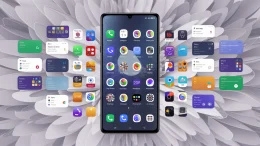The payments sector has been remarkably dynamic for some years now: dizzying valuations, double-digit growth rates, and an ever-increasing speed of technology advancement on a scale barely experienced in any other industry. We have seen the coronavirus fully transform consumers’ shopping habits, drive retailers to the verge of bankruptcy, and shine a spotlight on the value of digital capabilities, all of which have served as an enormous catalyst in an already fast-moving payment industry.
The Future of Mobile Payments in a Post-COVID-19 World
Many people think that everything is now changed — but we have no reason to think that this new normal is here to stay. However, the changes will only advance further, with far-reaching implications on business strategy for players along the entire payments value chain.
Consumer payment methods are evolving at a rapid pace, reshaping payments all over the world.
This has been particularly evident during the COVID-19 pandemic, as transactions have gradually moved online as stores have been forced to close. Overall, the ways we pay are affected by our cultures, habits, innovations, and the technology available to us.
Digital Payments
In the light of the COVID-19 pandemic, the digital payment industry is booming and fundamentally changing. The crisis has changed people’s views of payments and financial services, with cash use decreasing and contactless adoption promoted by several countries. This shift to a cashless society affects all aspects: retailers, merchants, consumers, governments, financial institutions, and service providers.
As per Market Research Future (MRFR), the global mobile payments market is anticipated to reach USD 3,300 billion at a CAGR of 32% from 2017 to 2023 (forecast period). In today’s market, the mobile payments market is predicted to have a high growth potential.
For day-to-day transactions, mobile payments are a cashless medium.
A technology that allows users to make instant cashless payments using their smartphones. According to the study, the significant driving factor for the mobile payments market is the technological advancements that are occurring in today’s world. The adoption of advanced technologies such as near field communications (NFC) is increasing its popularity.
NFC allows users to connect two electronic devices, such as smartphones, by simply bringing them close to each other. Furthermore, other driving factors include the ease of use, secure approach, speed, and offers associated with it.
According to the Worldpay Global Payments Study, the growth of mobile payments will continue to be the biggest factor in consumer payment in 2020, making shopping simpler than ever and already leading e-commerce payment preferences with 42% of spending in 2019—up from 36% in 2018.
Personalized Service for Customers
As we all know, in addition to innovation, the commerce and banking industries are working hard to have a plethora of payment methods that are customized based on the needs of the consumers, both online and in-store.
Will cash continue?
Although Deutsche Bank assumes that cash will continue, the next decade will see rapid growth in mobile payments, leading to a decrease in the use of plastic cards. Over the next five years, mobile payments are projected to account for two-fifths of in-store transactions in the United States, quadrupling the current amount.
Mobile payments, which range from retailer-specific applications to wallets provided by financial institutions, device manufacturers, and technology platforms, deliver convenience and protection to customers and businesses worldwide. In 2020 alone, over one billion shoppers used mobile payments.
Similar growth is anticipated in other developing countries; however, different countries will experience varying cash and plastic card shrinkage levels. In emerging markets, the impact can be felt much earlier. Many consumers in these countries are making the switch from cash to mobile payments without ever having used a plastic card.
Generation-Z – today’s children and young adults – would also have a huge effect on the future of payments.
This technology-savvy generation, born and brought up in a mobile-first world, accounts for nearly 26% of the global population. Learning how to navigate the world in the age of “fake news” and getting their digital lives bombarded with messages of dubious quality and authenticity, Gen-Z wants more personalization, better quality, and greater performance from businesses.
Brands that want to win over Gen-Z must also appeal to their digital, flexible, and mobile-focused payment preferences. The ubiquitous smartphone is quickly becoming the new wallet of choice for this generation. Many customers opt to store their favorite cards in their phones rather than carrying physical cards. This is causing major shifts in global point-of-sale payment acceptance, which has risen from 16% in 2018 to 22% in 2019.
China is the Market Leader in Digital Wallets
We can learn a lot about the future of payments (particularly during the pandemic) from developments in China, which is building a world-class mobile payment infrastructure. There, the value of online payments accounts for nearly three-quarters of GDP (71%), nearly double the proportion in 2012. Today, just under half of all in-store transactions in China are made using a mobile phone, far above levels seen in other developed markets (25% in Germany and 24% in the U.S.).
Mobile payments now account for 22% of global point-of-sale spend in 2019 and are predicted to account for nearly a third (30%) of customer payments over the next five years. The increasing share of mobile payments adoption will be driven primarily by the steady decline in the physical usage of credit cards, debit cards, and charge/deferred debit.
Impact of COVID-19 Pandemic
COVID-19 is projected to have a major impact on the mobile payments industry. Contactless payments are thought to be more hygienic and safer. This trend is being driven by players in the commerce ecosystem who claim that contactless transactions improve safety and health. Compared to pre-COVID-19 projections, global contactless adoption was expected to rise by 6% to 8%, with an additional 110 million contactless payment cards expected to be released in 2020.
Mastercard’s global transactional data
Furthermore, Mastercard’s global transaction data and market analysis show a substantial rise in the use of mobile payments. As per the poll results, the number of mobile payments at supermarkets, groceries, and pharmacies during the March 2020 lockdown as a proportion of all face-to-face card payments rose by 25% compared to the previous year.
It’s cleaner to use contactless — that’s evident
Mobile payments are now used by 79% of people worldwide and 91% in the Asia Pacific, citing protection and cleanliness. The data reinforces how people search for alternatives in stores, choosing a secure and fast tap to check out over dealing with cash, pens, and keypads.
Even now that the coronavirus pandemic is beginning to abate — contactless cards and mobile payments are increasing in the United States and Canada, according to the results of an April 2020 survey.
During the pandemic, almost one-third of US customers used mobile payments for the first time, and the majority intend to continue using mobile payments after COVID-19. Mobile payments in the United States are predicted to more than double between 2020 and 2024, and contactless card payments are also rising.
Conclusion
The COVID-19 pandemic has had a huge effect on our social and economic well-being. Nevertheless, it is also true that it has been one of the most powerful forces of global digitalization.
Digital payments, particularly mobile payments, have risen as a reliable way for businesses and enterprises to operate in the post-COVID-19 new normal.
After discussing the effect of COVID-19 on all payment industries, one thing is clear: if any company wants to survive the pandemic — and all of the other “things” that may come down on “human-existence-pipeline — it must use mobile payment methods.
All companies must provide their customers with easy, convenient, and socially distancing-friendly forms of payments.
Image Credit: tim doublas; pexels; thank you!


















